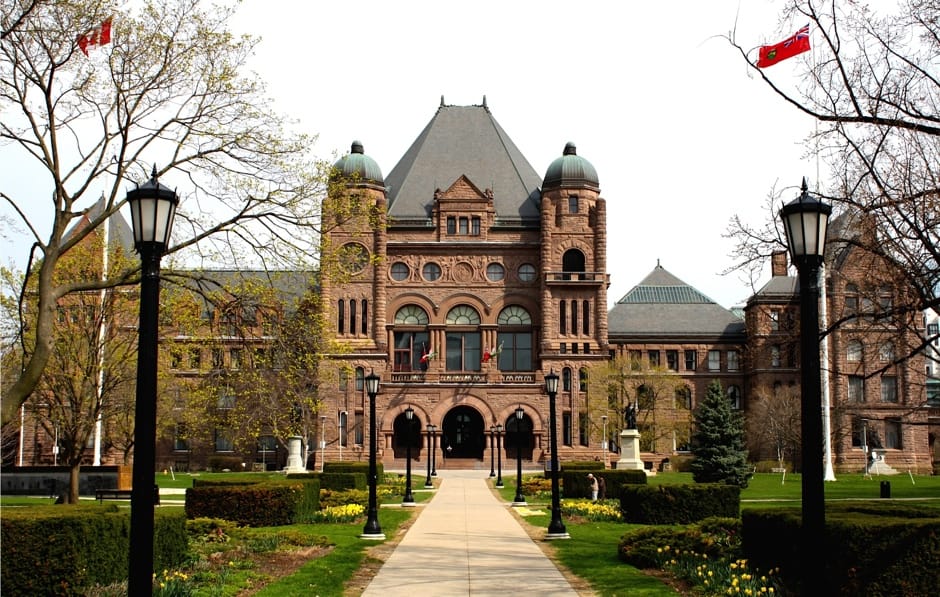Just over two months after their mandate letter was publically released, the Ontario Ministry of Training, Colleges and Universities, under minister Reza Moridi, has taken what they see as a major step in making post-secondary education more affordable.
On December 8, the provincial government moved to increase the annual amount of financial aid available and offered help for student loan defaulters who want to bring the Ontario portions of their loans back into good standing. The moves are already garnering both praise and criticism from student leaders.
Under the new policy, the amounts of aid available to students will be indexed to inflation annually. For the 2015–2016 academic year, single students will be eligible for up to $155 in aid per week, while those who are married or have dependent children will be eligible for up to $355 per week — both $5 more than at present.
This initial $5 increase and indexing, the ministry believes, will throw a lifeline to some of the 64,000 Ontario students whose needs surpass what the Ontario Student Assistance Program (OSAP) currently offers.
A similar policy will be enacted for the Ontario Student Opportunity Grant, which puts a cap on the amount of debt students are required to repay. This threshold, unchanged since 2011, will be indexed to inflation as well.
LOAN REHABILITATION
The Liberals also introduced the Ontario Student Loan Rehabilitation Program for students who defaulted on the provincial portion of their Canada-Ontario loans. Defaulting not only renders one ineligible for further OSAP assistance until loans are back in good standing or repaid in full, but may also make it more difficult for individuals to take out other loans — for example, for a car or a house — in the future.
The program allows them to rehabilitate these loans by demonstrating what the ministry calls “a commitment to repay.”
According to Belinda Hanson, communications advisor for Moridi, the provincial government holds students’ concerns as a top priority.
“Our government remains committed to ensuring Ontario students have access to a high-quality postsecondary education. Ensuring our plan for Ontario’s postsecondary system is transparent is important to our government, which is why it has been posted online,” Hanson says.
STUDENT REACTIONS
Canadian Federation of Students (CFS)-Ontario chairperson Alastair Woods, however, expressed concern, saying that policies such as increasing the amount of student aid do not go far enough to address the root cause of students’ financial woes.
“Increasing the amount of repayable student aid available simply piles more onto students’ already massive debt loads. We would have preferred cost-of-living increases to non-repayable forms of financial assistance,” he says.
While Woods agrees that the debt rehabilitation policy is a step in the right direction, he adds that he sees room for improvement.
“The government must make bolder efforts to address Ontario’s student debt crisis, and this means finding ways to increase non-repayable assistance, ease existing debt burdens and of course, decrease tuition fees to undercut reliance on loans as a means to finance one’s education,” he says.
The CFS has a history of nationwide advocacy against tuition increases.
However, the Ontario Undergraduate Student Alliance (OUSA), another major student organization, took a more positive view.
OUSA president Jen Carter said that it is only sensible for the amounts of available aid to reflect the rising cost of education.
“Providing loan and grant maximums that accurately reflect rises in the consumer price index will provide more stability for students who are most in need of financial aid,” she said in a press release.
Carter also expressed support for the Ontario Student Loan Rehabilitation Program.
“We are pleased that Ontario has joined the other provinces in offering a debt rehabilitation program for students, which is especially helpful for students who are returning to school after being in the workforce, providing a clearer path into higher education,” she says.
According to a survey published by the OUSA, three out of every five of Ontario students who applied for private aid did so because government assistance did not cover all their costs.
Furthermore, initiatives like the Tuition Tax Credit may also be less effective than intended, with the same survey claiming that only a third of students will earn enough money for it to be of any use.
Both figures seem to suggest that Ontario’s financial aid status quo was in need of improvement.
POST-SECONDARY FUNDING
Going much further than anything proposed by the provincial administration, study at most of France’s public universities is almost entirely taxpayer-funded. By October 2014, every state in Germany had done away with tuition fees altogether — a move praised by CFS national chairperson Jessica McCormick.
But, for any criticisms that arise from this policy, Hanson says the government is confident things are moving in the right direction.
“Over the past 10 years the Liberal government has made dramatic improvements to Ontario’s postsecondary education system… We have provided strong supports for students and worked to eliminate student debt… we’ve created a world-class system that offers students the opportunity to pursue their passions and learn the skills they need to compete in the global knowledge-based economy,” Hanson says.


